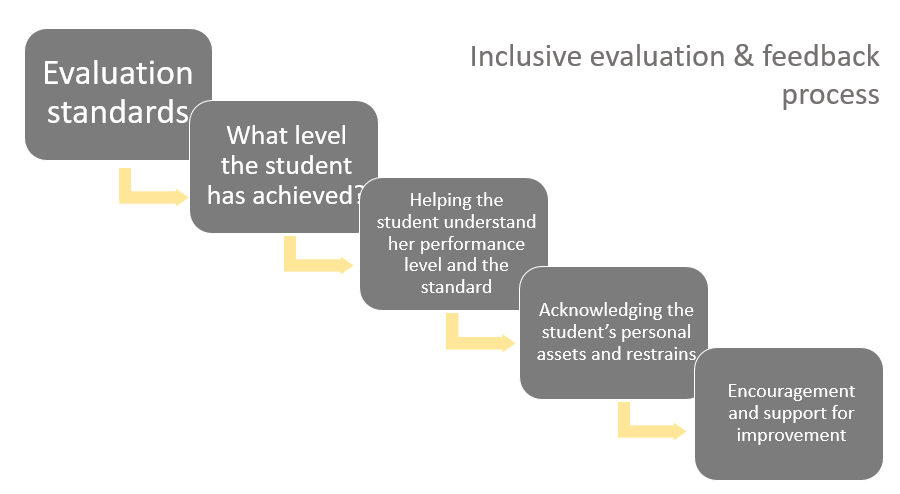Inclusive feedback process & checklist
A checklist on inclusive feedback helps the managers and evaluators to build a fair evaluation process.
The process supports the provision of objective and constructive feedback that is performance oriented, personalized and emphatic.

Checklist for inclusive feedback
The evaluation criteria
Discuss the criteria with managers and pedagogical developers.
Undertake a comparability of the evaluation process.
Calibrate the evaluation by reviewing a few assignments before the actual assessment.
Objectivity
Review the assignment through the lens of each assessment criterion.
Search for evidence of the student’s level of achievement on each criterion.
Monitor and disarm your red marking. (For grammar + referencing errors ‐ edit once, then comment.)
Performance oriented & developmental
Provide clear and precise feedback, avoid vague judgemental terms that don’t describe the
qualities of the student’s work or the standard (e.g. excellent, good work, poor).Criterion referenced: Provide specific, relevant information on the students’ level of
performance in relation to the standard.Avoid focus on grades which can increase compliance and
reduce students’ autonomy, risk taking and learning.Focus on two or three key areas for improvement (rather than every error).
Feedforward: Provide advice, strategies or resources students can use to improve their performance.
Personalized & emphatic tone
Acknowledge individual quality of work.
Acknowledge effort and attempt.
Adjust the feedback to suit the student’s level of achievement.
Take into consideration the student’s special circumstances when aware and reasonable.
For large groups create a feedback template, use standard comments but modify as appropriate for each student.
Source: Adapted from S. Macfarlane (2015) Deakin University
